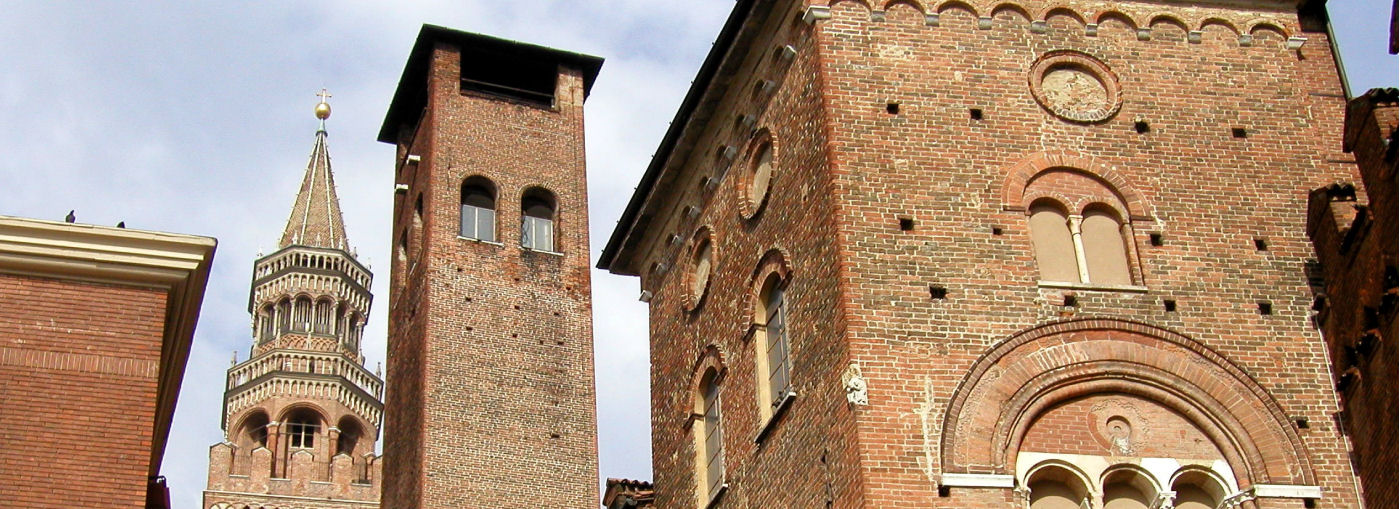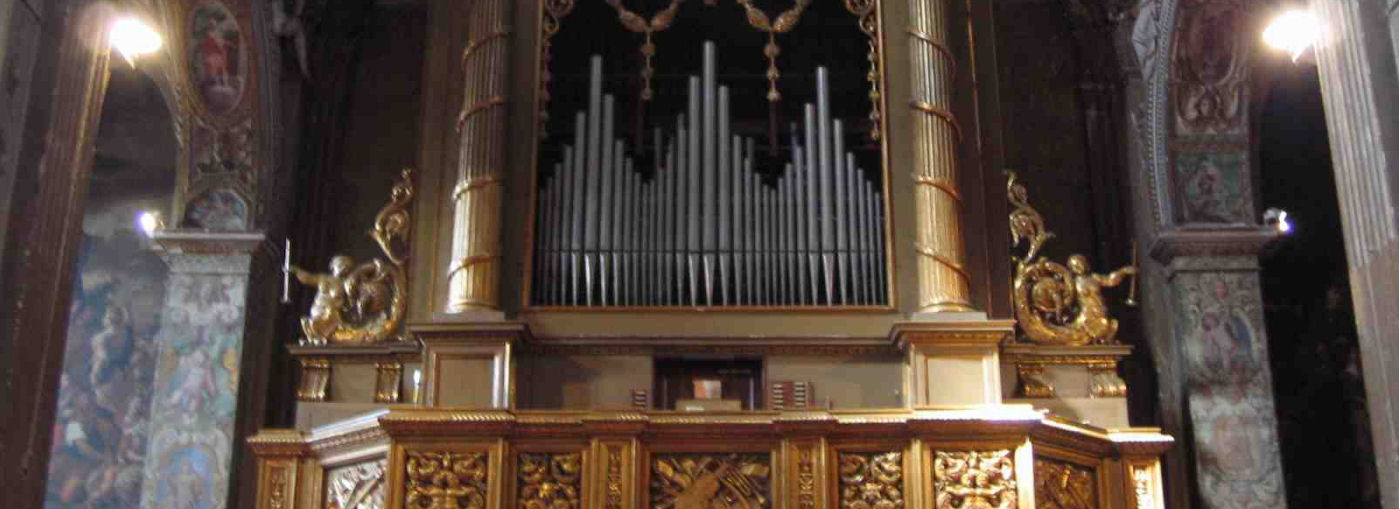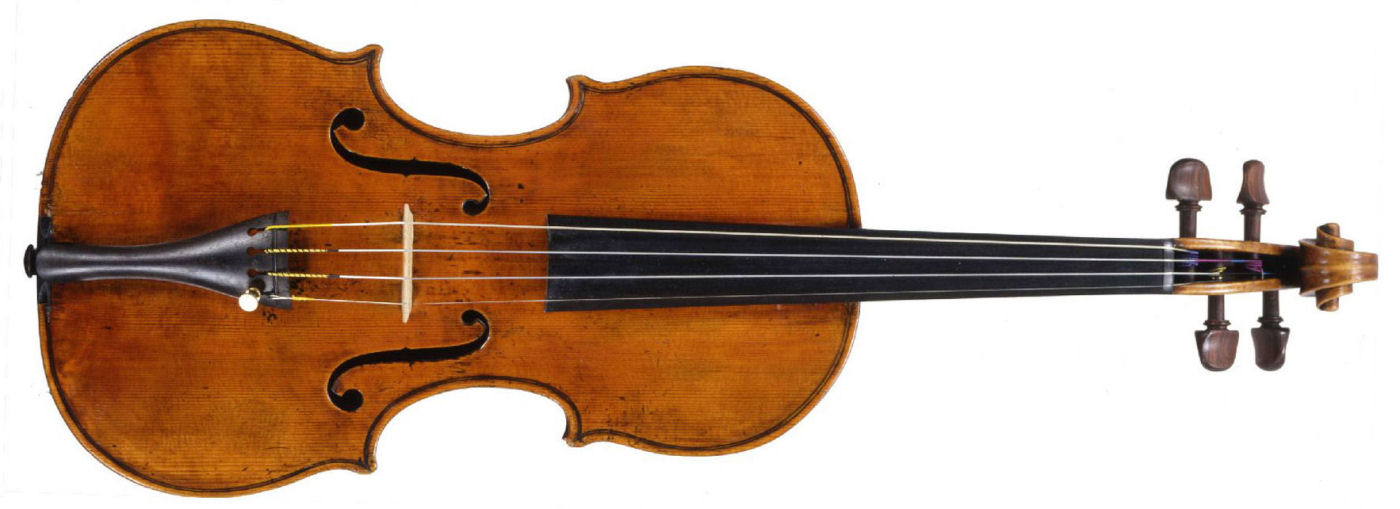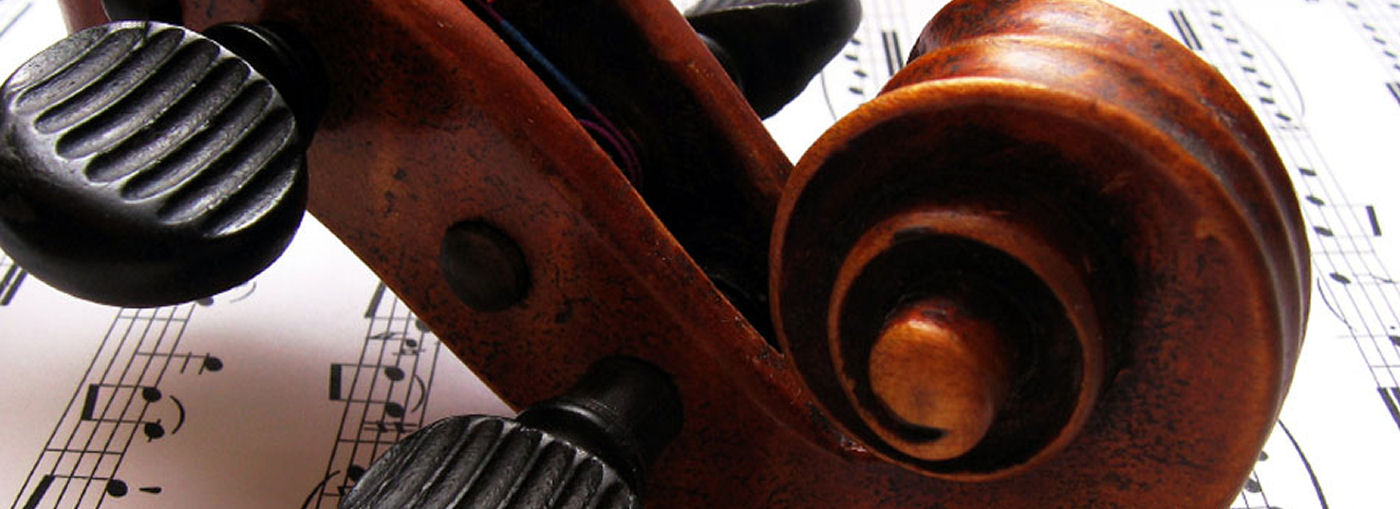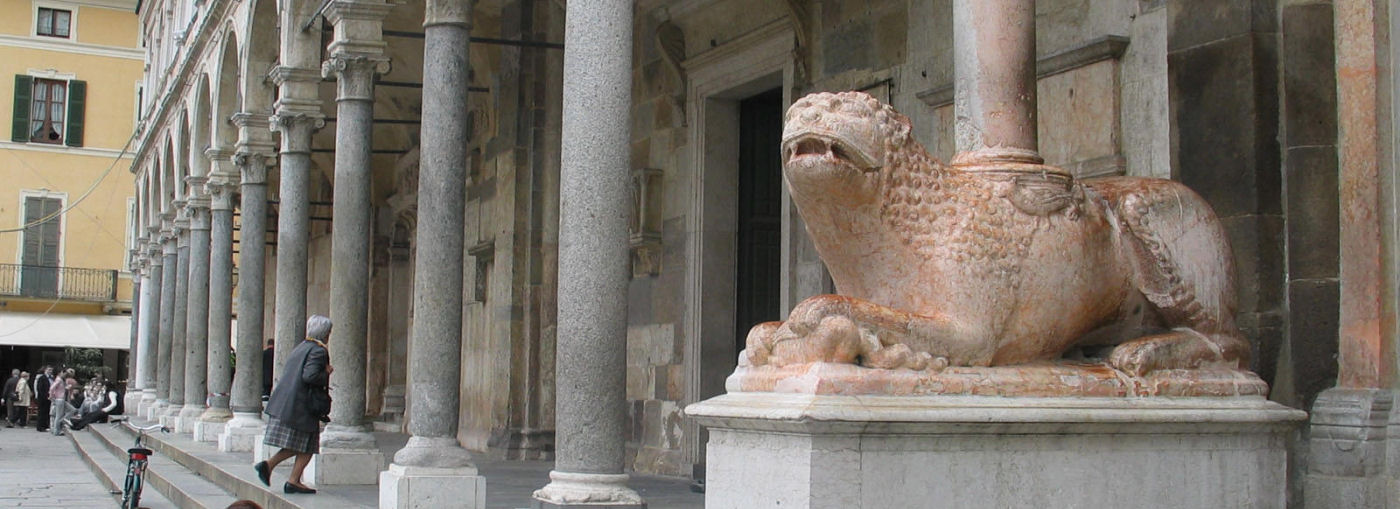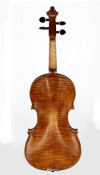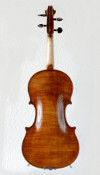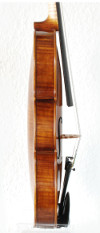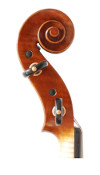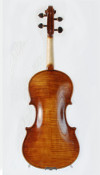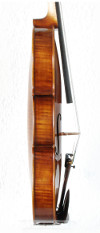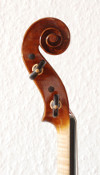
Premier hand-crafted quality from Germany and France.
The best sounding string instruments are 200 years old or more
but unfortunately they come at a price. One pays for age, workmanship and the name of the luthier. Also not every old instrument produces an immaculate sound.
They are like oil paintings by one of the great masters, their price being a reflection of fame and age.
Musicians are interested in a clean, focused and rich sound and not necessarily in acquiring a collector's valuable - especially when on a limited budget.
What distinguishes our instruments from most others?
Aged tone wood.
Why aged wood?
It is all about quality of sound. Wood having matured from anywhere between 150 – 300 years is called aged. It has far more harmonics than new wood. This is why it produces MATURE SOUND. Understandably ninety per cent of all high profile soloists prefer playing an old instrument.
Why not duplicate the sound with new wood? - Some are building them, right?
There exist quite a few good sounding modern instruments but copying the identical sound with new wood is hard to imagine, since new and old wood have different physical properties.
Isn't sound something very subjective?
For the average musician, YES. Sound is generally not an issue until the buyer actually steps in the door and tries out his instrument. It is a bit like walking into an outfitter’s boutique selecting the most appealing dress and letting your eyes speak.
In what respect is the professional musician's approach different?
He looks at quite specific criteria, e.g. how the sound compares to the best instruments he ever experienced, he will search the strings for harmonics and he might honour ease of playing.
We do a frequency fingerprint of the expensive original. Then we show you the fingerprint of your copy. It’s that easy.
A final question: If there exist some equally good modern instruments, why do many top level musicians still prefer an old instrument?
Trust and myth. It has been shown under most stringent testing conditions even the professional violin player cannot distinguish old from new. In a recent double blinded test 2 Strads were mixed with 4 other violins. 17 professional players were asked to find the Strad. Thus the probability was 2:4 = 33%. The test showed 7 undecided, 3 correct and 7 wrong = 30% proving that a professional player’s ear is unable to outperform a dice. Reassuringly our frequency anaylzer was able to discover the Strad.

 Can anyone find the Strad?
Can anyone find the Strad?
We therefore copy the sound of the most precious instruments. Consequently the buyer gets a sound similar to the original for a price comparable to some of the quality instruments built from normal wood.
A word of CAUTION: The Cremona label is not always a sign of quality
In 2014 China produced 600.000 violins some of them selling for as little as $30. There is evidence that cheap Chinese mass produced components were sent to Cremona just for body assembly and labeling with the sought after Cremona label. Finally the raw bodies were shipped back to China for finishing and set-up. Factory made components and Chinese labor sky rocketed the price just by travelling. A single label changed a product of mass production to a handmade work of art.
As long as a violin is used to produce music the label is of little help – only its acoustic properties count. In most cases only a professional violinist can judge acoustic quality and distinguish genuine value from fire wood.
Shortcuts
We begin with aged tone wood
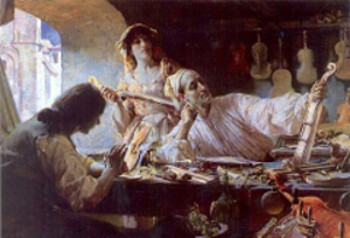
by selecting our wood from the well-stocked shop of Andreas Pahler. Andreas also sits on the board of directors of the charitable friends’ association of the “Federal School of violin makers” in Mittenwald - Mecca of luthiers in Germany. He is one of the internationally most respected tone wood specialists not only as an academic forestry scientist but also as a luthier knowing all aspects from the raw wood to the finished instrument, which eventually produces Mature Sound.
Wood that shows superior quality – such as found in genuine 18th century instruments - has a different cell structure than recently harvested wood. It has reached this maturing through chemical and physical metamorphosis over many decades in a process of limited and controlled decay. In some instances certain fungus also contributed its share. Storing wood for 20 years in the attic may harden it, but it will not produce the required metamorphosis. It may be interesting to note that Strads did not come to fame until Paganini picked them a century after they were built.
Initially we run the raw tone wood through an audio frequency check-up to warrant undisturbed growth also on the inside.
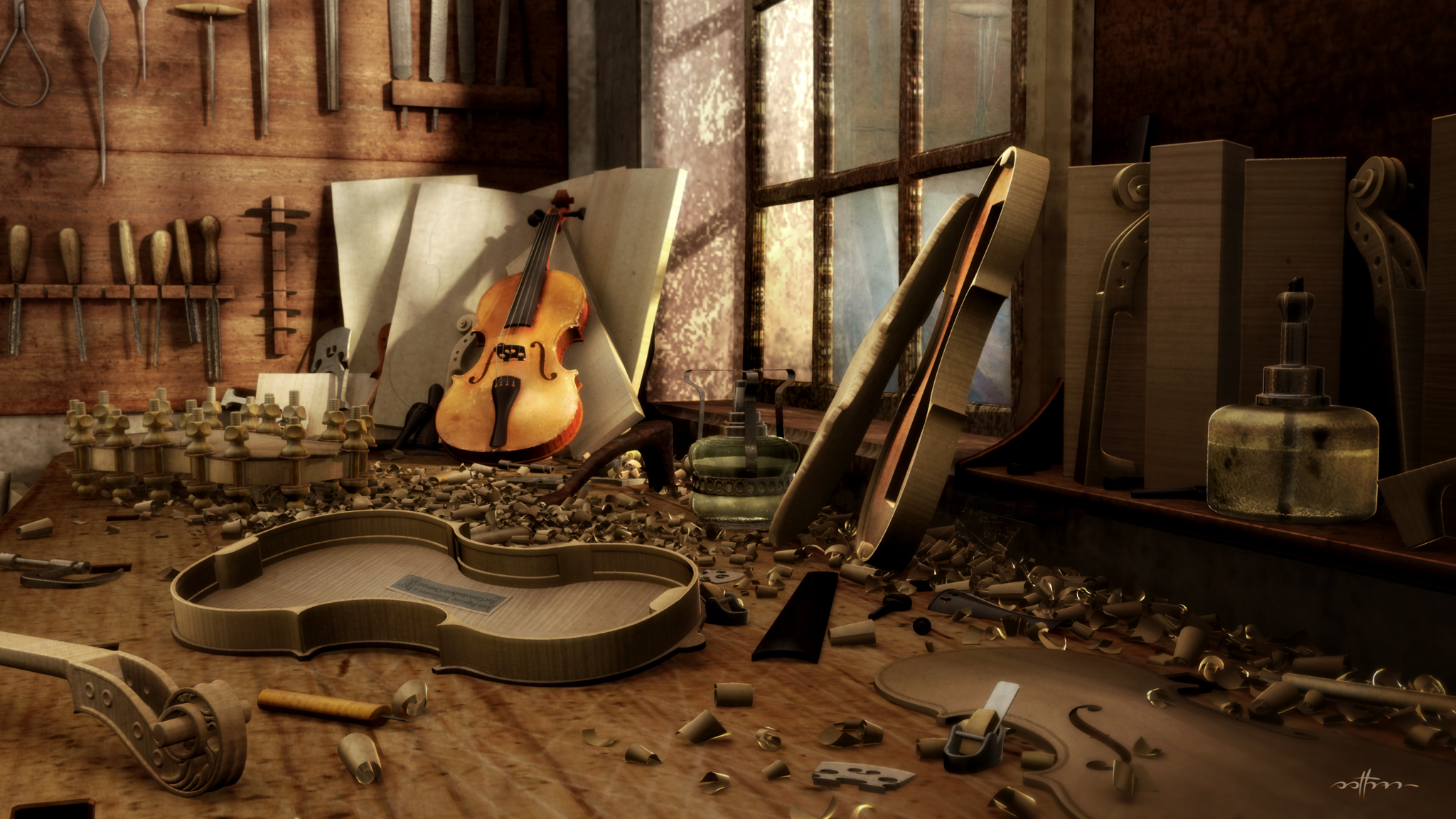 The tone wood then goes for several months in a conditioning chamber for aging. The soft cellular tissues that increase the specific weight and decrease the elasticity are now removed. Finally the wood is dried under high vacuum to dispose of all the heavier volatile components. It has by now undergone a unique metamorphosis increasing its speed of sound and elasticity that brings it in line with old vintage wood.
The tone wood then goes for several months in a conditioning chamber for aging. The soft cellular tissues that increase the specific weight and decrease the elasticity are now removed. Finally the wood is dried under high vacuum to dispose of all the heavier volatile components. It has by now undergone a unique metamorphosis increasing its speed of sound and elasticity that brings it in line with old vintage wood.
But this is not all. We re-engineered the lignin biochemically by bonding metal ions between certain segments within the macro molecule. This makes the fibers four times more tear-resistant providing a spruce top, which is substantially more durable than any other you can find. In short, over a decade of physical and chemical research are warranting exceptional quality.
Finally we hand over the AGED WOOD to our master luthier Sylvain Tournaire, who has his atelier in the French Pyrenees Mountains. It was his fine touch that was able to produce a copy of the Huberman, which sounds exactly like the original. Also Sylvain brews his colors himself like the 18th century masters did. The “Vieuxtemps” has the same gem stone varnish typical only for Guarneri del Gèsu during the last 4 years of his life.
New tone wood:  listen and compare
listen and compare
Aged tone wood:  listen and compare
listen and compare

The making of a precious instrument
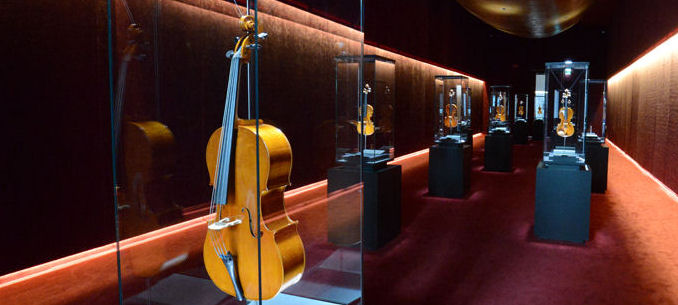
Geometry of design: We take some of the most successful designs from Cremona and Venice around the “golden age” (1700 – 1725). In this time both cities exchanged their experience building thousands of string instruments. Today we profit from this vast knowledge.
Sealing of the wood: Stradivari polished the wood on the inside with volcanic silicate making it resilient to moisture. We are taking it one step further by insulating the wood with a water repellent less than the thickness of a human hair. Brief periods of very high humidity will not blunt your sound getting you successfully through your recital.
Varnishing: Our instruments are finished with several layers of oil varnish to please even the most demanding eye. Our Guarneri del Gesù Vieuxtemps boasts exactly the same gem stone varnish as its original rendering its unique sound.
Fingerprinting of sound: We maintain an audio frequency data base of several well-known instruments. Also we analyze the effect different varnishes have on the sound. Applying too many coats of varnish may be appealing for the eye but detrimental to the sound. Therefore we always closely monitor frequency behaviour.

Frequency Fingerprint of our Copy (left) compared to the Original (right) after only eight months playing.
Rollout: Before you receive your instrument it has already been played in to the degree that you can actually start working. At your request we will continue to monitor the development of your frequency fingerprint.


You can order the following instruments made from AGED WOOD:
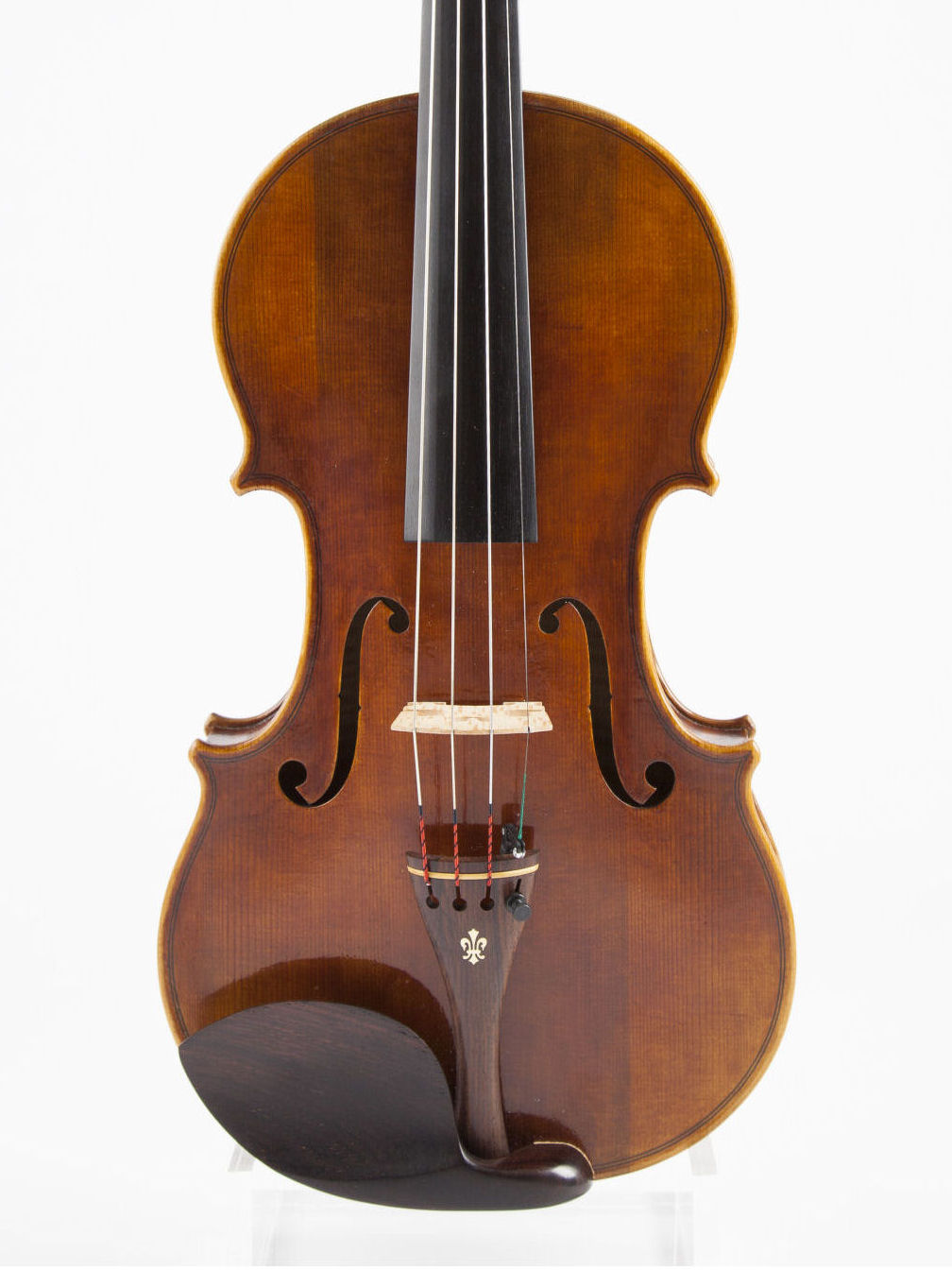 |
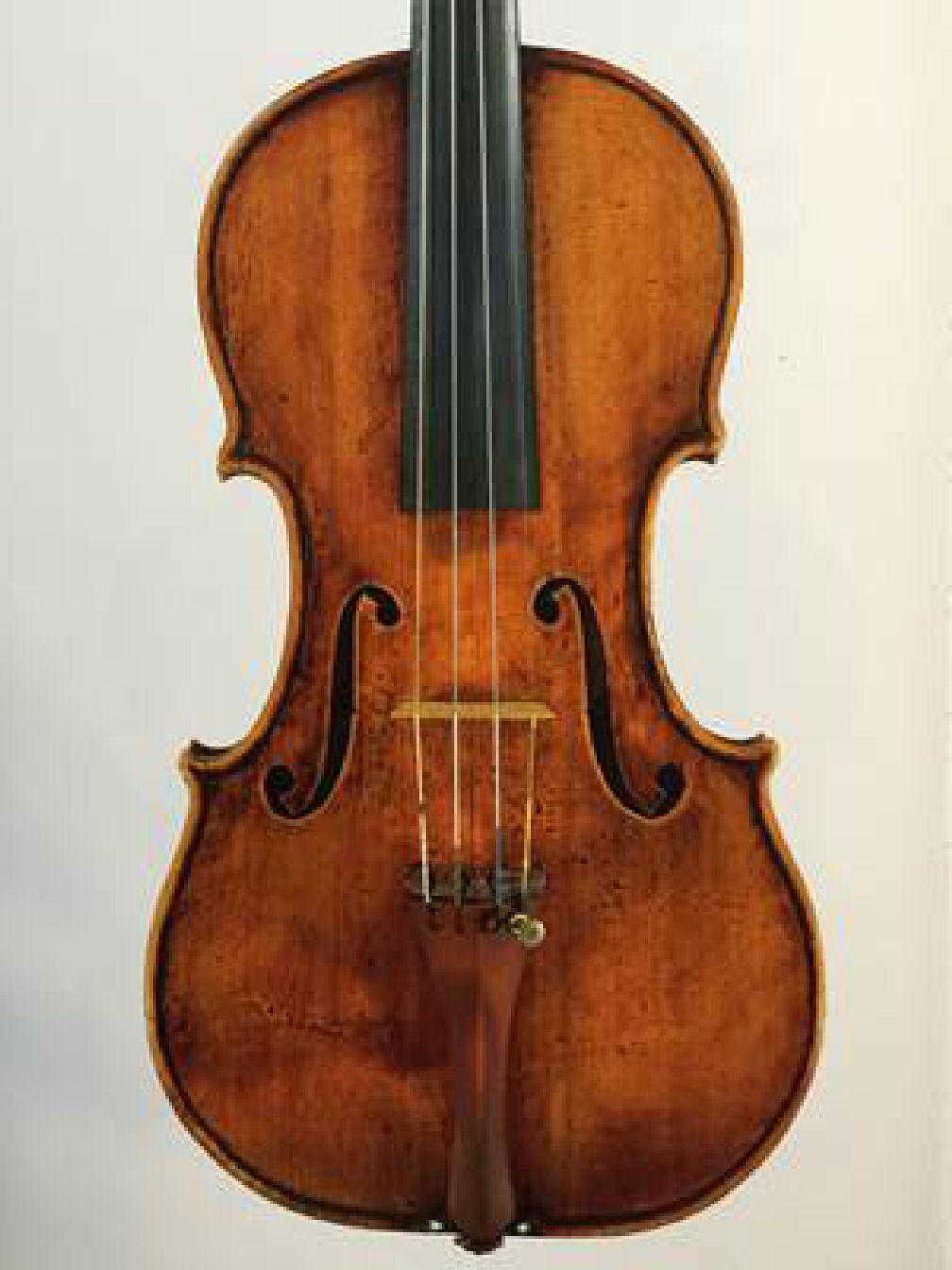 |
Left: VIOLIN Antonio Stradivari (1713) “Huberman” – 2001 purchased for US$ 4 million by Joshua Bell.
Right: VIOLIN Guarneri del Gesù (1741) “Vieuxtemps” – 2012 purchased for US$ 17.8 million by an anonymous buyer – in the past played by Eugène Ysaÿe, Yehudi Menuhin, Itzhak Perlman and Pinchas Zukerman – presently on lifetime loan to Anne Akiko Meyers.
HUBERMAN:
Experience a rainbow of colours and a well-focused rich sound even in the high registers.

 J.S. Bach: Ciaconne from Partita #2 in d minor
J.S. Bach: Ciaconne from Partita #2 in d minor
 |
VIOLA: Antonio Stradivari (1734) “Gibson” – purchased for an undisclosed amount by Stradivari Stiftung Habisreutinger – on loan to Lech Antonio Uszynski (Stradivari Quartet).
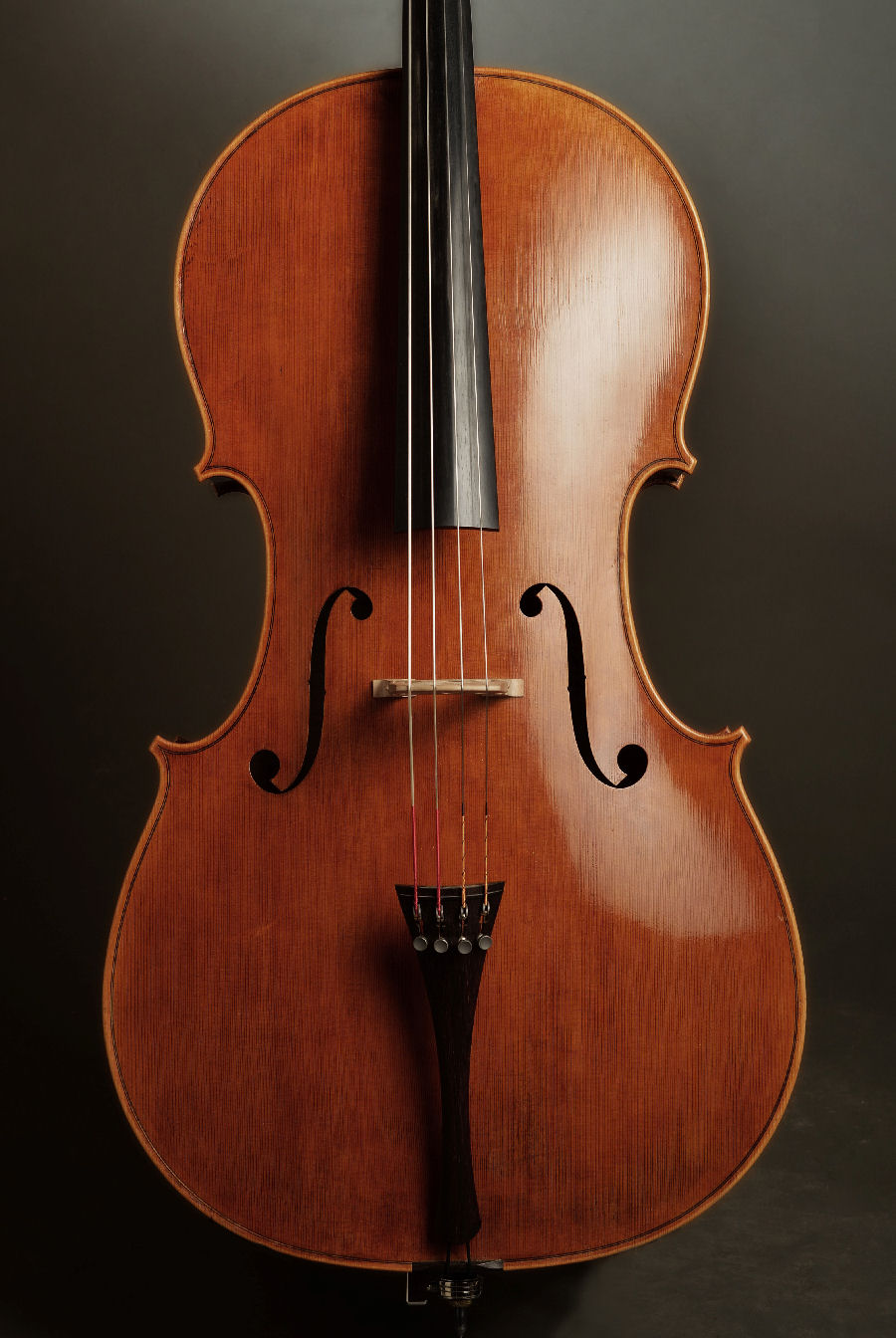 |
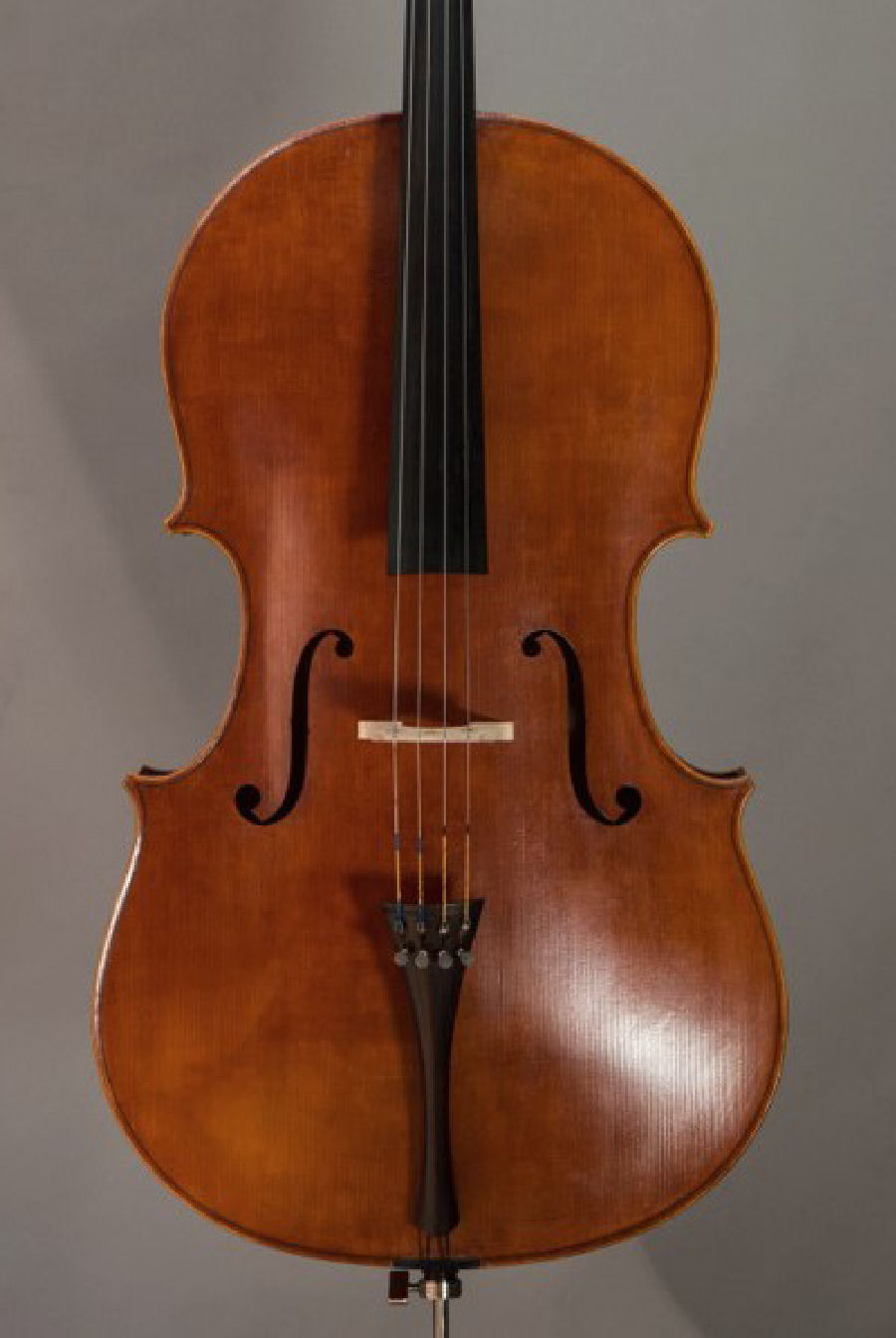 |
Left: CELLO: Antonio Stradivari (1712) „Davidov“ – 1988 purchased for US$ 2 million by Vuitton Foundation – played by Jacqueline du Pré – presently on loan to Yo-Yo Ma.
Right: CELLO: Domenico Montagnana (1720) – after Mischa Maisky's debut at Carnegie Hall in 1973 an anonymous admirer sells him this cello for a token price.

When ordering select between OLD or NEW finish
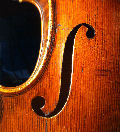 |
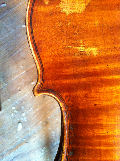 |
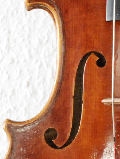 |
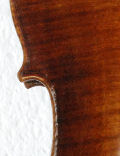 |

|

|

|

|

Special violins made from AGED WOOD:
To select a specific violin click on the model below, and then move the cursor outside the image again. The requested model will then appear selected.
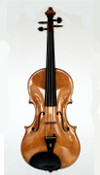 |
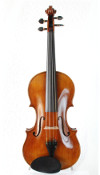 |
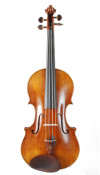 |
To inspect the individual components of the instrument now go to the bottom diagrams and click on the component you want to select (back, scroll etc.). A moment later the main picture will immediately change. Now just run with the cursor over the main picture (without clicking) and you can inspect it enlarged.

|
“Garibaldi”
The sound of this violin reminds of a grand Amati, clear and innocent and yet capable of covering even the larger concert halls in all its registers. |

|
“Mantova”
This instrument has a juvenile and warm body sound in the low register and is highly focused and rich in the treble. |

|
“Desdemona”
Impressively gentle and voluptuous in sound this instrument creates lots of room in all of its registers. |

Links & Downloads

 Assessing present day Premium violins
Assessing present day Premium violins
![]()
 In search of the best-sounding tone wood
In search of the best-sounding tone wood
![]()
 History of Filipino string playing between 1946 - 2016
History of Filipino string playing between 1946 - 2016
![]()
 Investing prudently in violins
Investing prudently in violins

